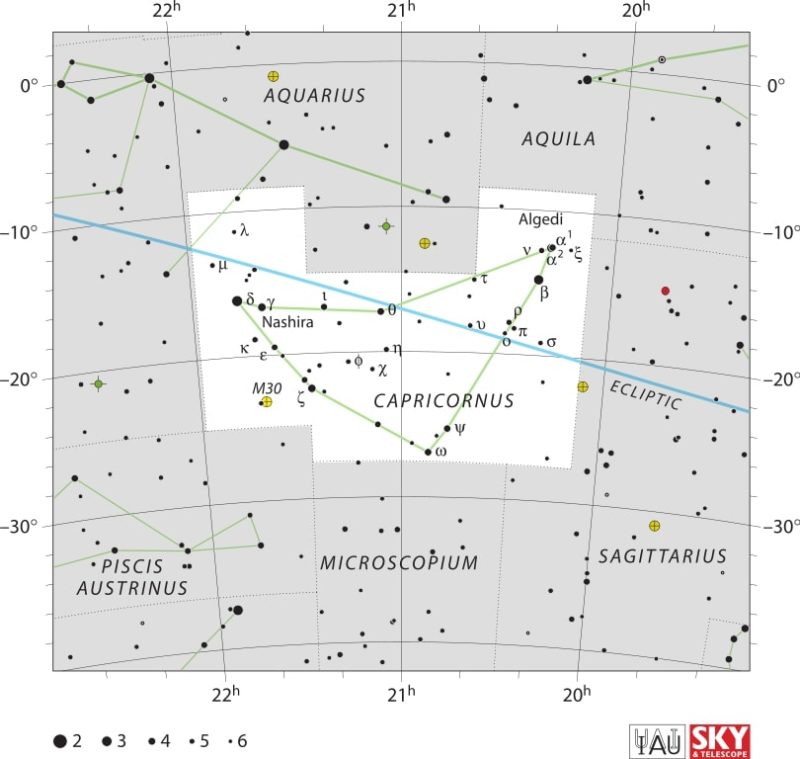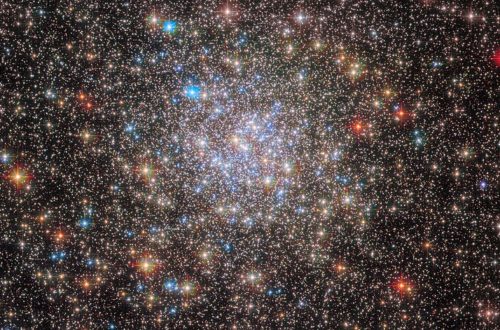Alpha Capricornid Meteor Shower Overview

The Alpha Capricornids are a relatively minor annual meteor shower that combines activity between July 3 and August 15. This meteor shower comes from Comet 169P/NEAT, whose radiant point is found in the Capricornus constellation. You can see these meteors from almost any place on Earth. They really come into their own in places with dark, non-polluted skies.
What makes the Alpha Capricornid meteor shower unique is that they create exceptionally bright meteors. Despite their low frequency, you can still see around five meteors per hour at most during their peak activity.
What Are Alpha Capricornids?
The Alpha Capricornids are a minor meteor shower that brightens up our night skies every summer. This meteor shower typically peaks from July 3 to August 15. Even with its comparatively low meteor count, this shower is worth a look. We hope you’ll enjoy learning what makes it so special, and why it’s such a standout among celestial events.
Define Alpha Capricornid Meteor Shower
The name “Alpha Capricornids” comes from the constellation Capricornus, where the shower’s radiant point is found.
This celestial event is attributed to comet 169P/NEAT, the trail of whose debris Earth passes through every year. Its particles are quite slow, moving at 23 km/s (about 14 mi/s).
Distinguishing Features of Alpha Capricornids
The Alpha Capricornids are unique in that they are known for their relatively low meteor activity. At peak, look for around five meteors an hour.
Thanks to the amazing fireballs it generates, even in the most light-polluted skies, this shower is notable. The shower reaches peak activity on July 30, creating an ideal window for observation.
Origin and Parent Body
The Alpha Capricornid meteor shower comes from debris left by the short-period comet 169P/NEAT. This comet is the source of the shower of particles that our planet flies through each year.
As the comet moves in its orbit, it leaves a trail of dust and debris, creating a stream of particles. These fragments burn up when they enter Earth’s atmosphere, creating the colorful streaks of light we see during the meteor shower.
How to Observe Alpha Capricornids
The Alpha Capricornids meteor shower is a real treat for skywatchers each year. It never fails to deliver a surprising array of meteors over long stretches of time. It runs from July 3 to August 15, with its peak usually falling around July 30. Viewing this unique shower begins with knowing when to look for it, as well as what conditions to make the best observations possible.
Prepare for Meteor Watching
To fully enjoy the Alpha Capricornids, preparation is essential:
- Bring essentials: a reclining chair or blanket, warm clothing, snacks, water, and a red flashlight to preserve night vision.
- Keep bright screens or lights to a minimum leading up to and while watching. Your eyes take 20-30 minutes to adjust to the dark, so come prepared.
- Find a dark, open space away from city lights, and get there early to snag an unobstructed spot.
Having everything set up ahead of time allows you to get comfortable and get the most out of the experience.
Equipment Recommendations
Meteor showers are most spectacular when viewed with the naked eye, which provides a much greater field of view. While binoculars reduce this field of view, they can aid in locating the fainter meteors.
For those interested in a little more tech, meteor-tracking apps can help make the experience even better by providing real-time updates.
Photography Tips
Meteor shower photography takes practice and a sturdy tripod. For the best results, use a DSLR or mirrorless camera that has long exposure settings, a wide-angle lens, and a sturdy tripod.
For ISO, you will need to adjust—start at ISO 800 or higher and set your exposure time to 20-30 seconds for best results.
Factors Affecting Visibility
To view the Alpha Capricornids to their fullest potential, it’s important to know a few different factors that can affect visibility. From external light sources to environmental factors, everything affects the quality of what you see. Below, we unpack these factors and provide tips to maximize your visibility.
Light Pollution Impact
In particular, light pollution has a major negative effect on the odds of spotting meteors. Bright city lights drown out these faint streaks, greatly affecting visibility. To combat this, prioritizing sites well outside major metro areas is key.
Unsurprisingly, rural areas, national parks and other dark-sky reserves are the best places to catch the show. Dark sky reserves are havens for unobstructed natural beauty, free of the blaring light pollution.
Cutting down on one’s own light sources is just as important. Try not to use bright screens or flashlights while you are looking.
Moon Phase Influence
The current moon phase plays a role in meteor visibility. A bright, full moon will severely wash out the fainter meteors. Conversely, a crescent or new moon substantially darkens the skies, providing ideal circumstances for best viewing.
In understanding how best to plan ahead, take in the meteor shower on dark, moonless nights.
Atmospheric Condition Effects
Cloud cover and humidity affect visibility, as they scatter light and can obscure stars. Dark, clear skies are essential for a good meteor shower. Researching local weather conditions and picking nights with humidity as low as possible and the least cloud cover will ensure the best experience possible.
Conclusion
Alpha Capricornids provide a fantastic opportunity to engage with the night sky. They give a whole other feeling of wonder with their beautifully slow, bright meteors. Those who pause and gaze skyward are treated to a stunning meteor shower. You don’t need much in the way of equipment or advanced skill to enjoy this meteor shower. A clear sky, a dark location far from city lights, and some patience is all you need.
So if you’re a casual stargazer or a serious skywatcher, the Alpha Capricornid meteor shower has much to offer. So, save the date, bring a blanket, and tune in to the show. Share your experience—it’s encounters like this that make our community feel like home.
Frequently Asked Questions
When is the best time to see the Alpha Capricornids?
The peak of the Alpha Capricornids tends to be around July 30. The optimum time to observe is just after midnight when the sky is darkest and the meteors are most numerous.
Where can I watch the Alpha Capricornids?
You can see the Alpha Capricornids from all locations, as long as you are away from bright lights. Rural and suburban areas, miles from bright city lights, provide the best viewing conditions for this meteor shower.
What causes the Alpha Capricornids?
The Alpha Capricornids originate from debris left behind by Comet 169P/NEAT. As Earth passes through this debris, the pieces burn up in our atmosphere, creating meteors.
How fast do Alpha Capricornid meteors travel?
Unlike many of the other annual meteor showers, Alpha Capricornid meteors are quite slow, moving at an approximate speed of 23 km/s. It’s this low speed that makes them all the more awe-inspiring and easier to catch sight of.
See also:
- Previous meteor shower: Southern Delta Aquariid Meteor Shower
- Next meteor shower: Eta Eridanid Meteor Shower
Would you like to receive similar articles by email?





